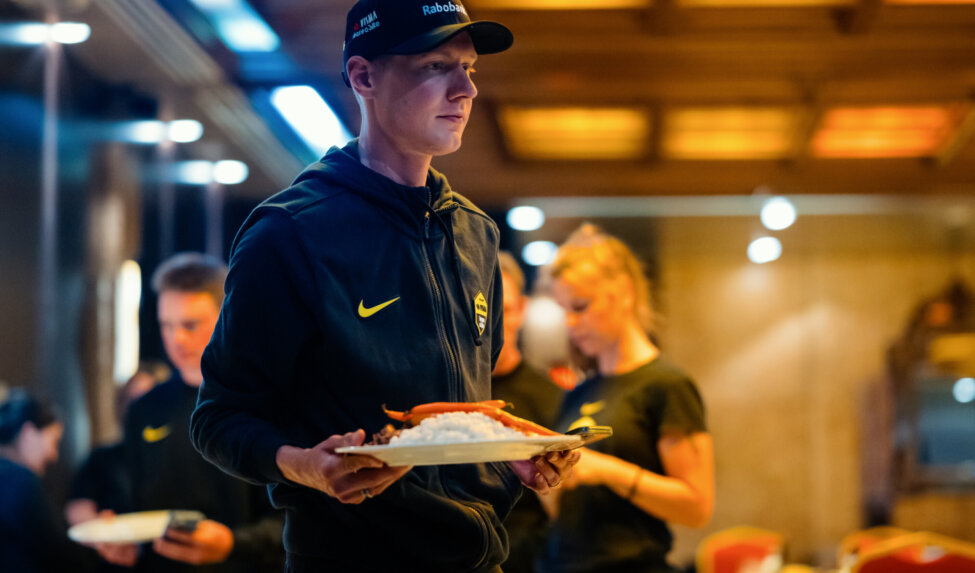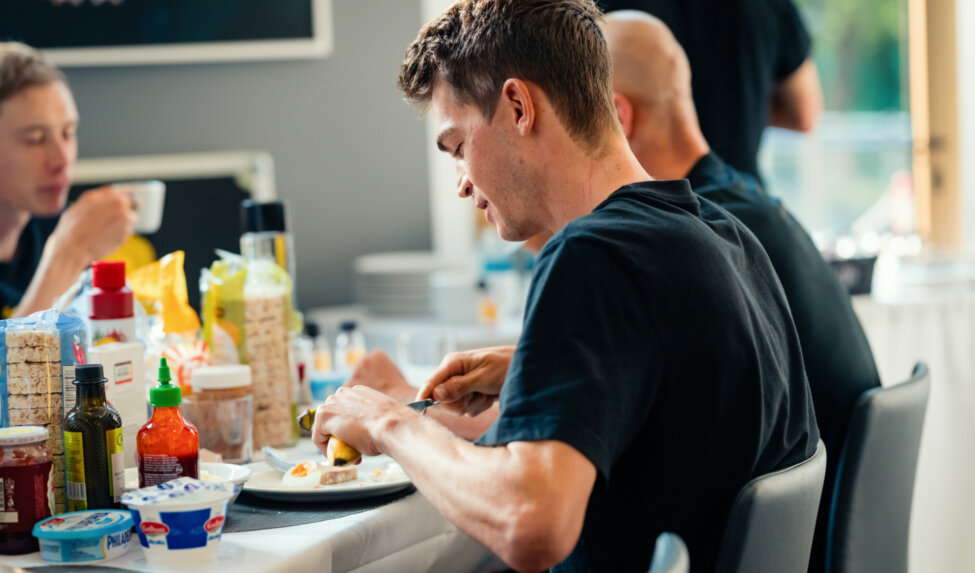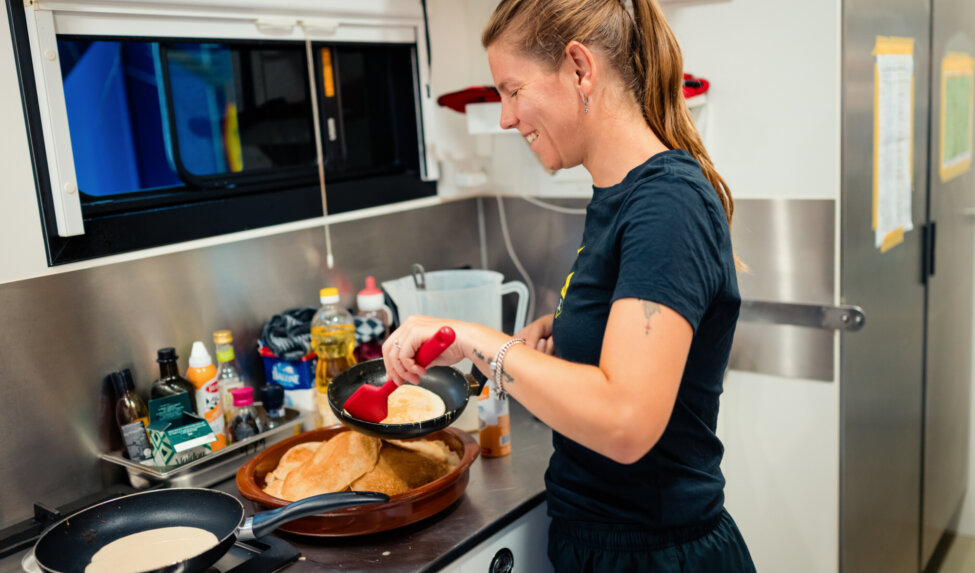The role of nutrition during the Tour of Flanders
With Dwars door Vlaanderen barely behind them, riders are already gearing up for the next iconic race, the 260+ km Tour of Flanders. History is made on the cobbles every year. While the cameras focus on attacks on the Paterberg and toiling over the Koppenberg, one aspect remains largely invisible: the role of nutrition. And yet it is precisely there, in what is eaten, drunk and timed, that can make all the difference.
During a six-hour endurance race like the Tour of Flanders, a pro rider burns thousands of kilocalories. The body is simply unable to store that much energy. Therefore, it is all about constant refuelling: mainly carbohydrates. Riders try to take in around 90 to 120 grams of carbohydrates per hour. A feat itself, especially under high intensity conditions, over bumpy roads and with limited eating moments.
It requires a precision-tuned nutrition strategy. At Team Visma | Lease a Bike, Amacx, as the official nutrition partner, ensures that precision nutrition is tailored to each course stage, with the aim of maximum performance and minimum surprises. Riders are trained to take three nutrition items per hour as standard. On rides where they take up to 90 grams of carbohydrates per hour, they use the Amacx Energy Line. Thanks to the 2:1 ratio of glucose to fructose, these are absorbed well. When the target is increased to 120 grams per hour, the team switches to the Amacx Turbo Line, with a 1:0.8 ratio that allows higher absorption. The approach remains the same, still three items per hour, but now with 40 grams of carbohydrate each.
As all bars, gels and drinks are perfectly matched per Amacx line, riders have the flexibility to choose a combination of gels, bars and/or drinks according to their preferences. Nutrition is not only a matter of energy, but also of timing. In the hectic pace of Flemish hills, it is simply not always possible to eat. Riders need to know; this is where I can refuel, this is where I need to be focused. Every gel, every sip counts.
All nutrition during the race is accurately tracked in the FoodCoach app, where the carbohydrates per hour are logged. Based on this, the FoodCoach app immediately recalculates the nutrition plan for the rest of the day, tailored to what the rider still needs for optimal recovery and energy balance. This way, every meal moment seamlessly fits to the effort, without any guesswork.








